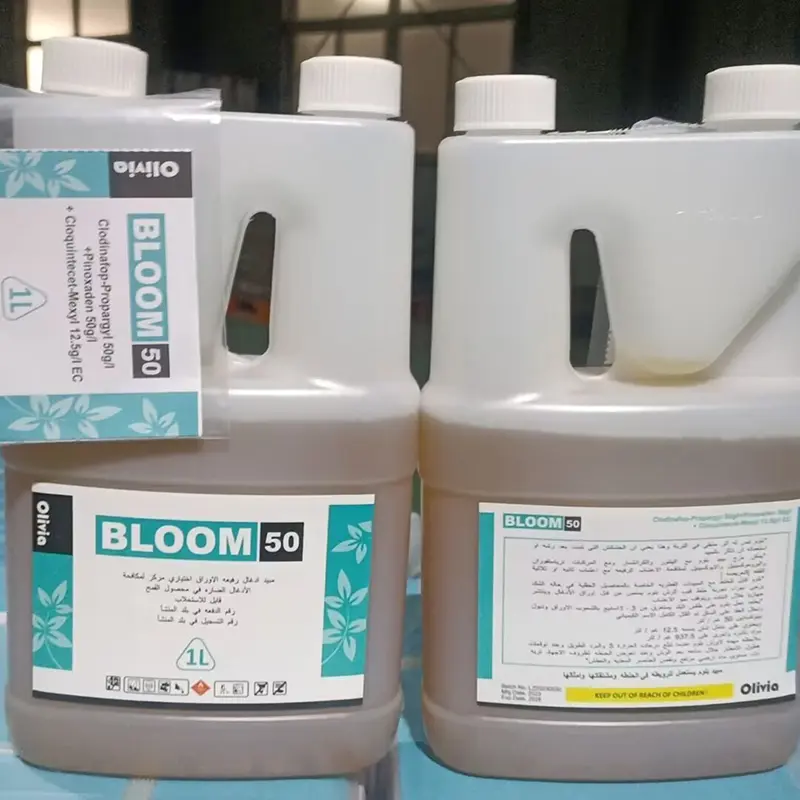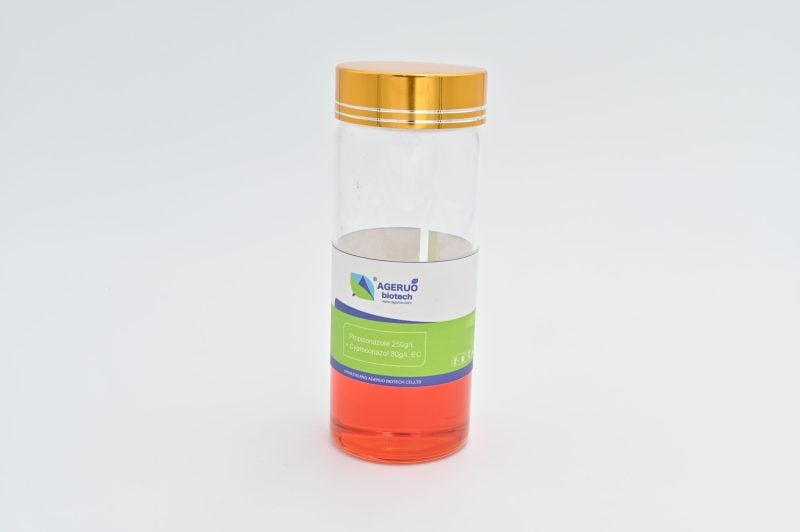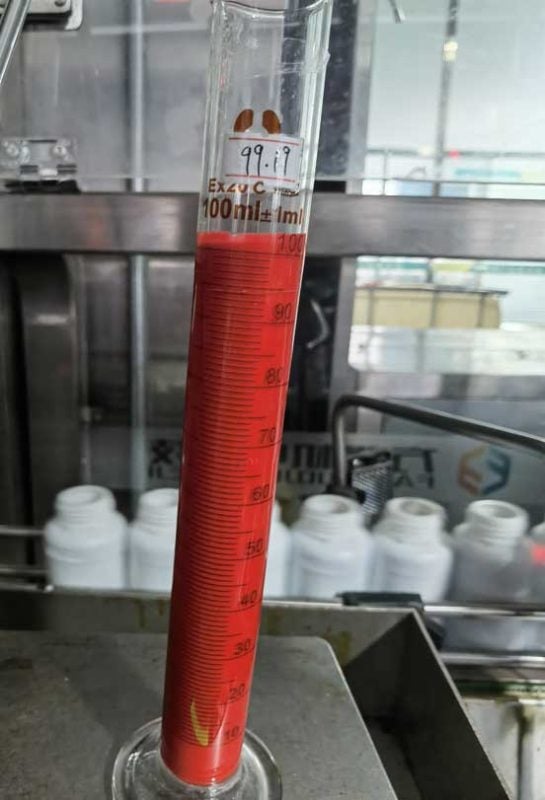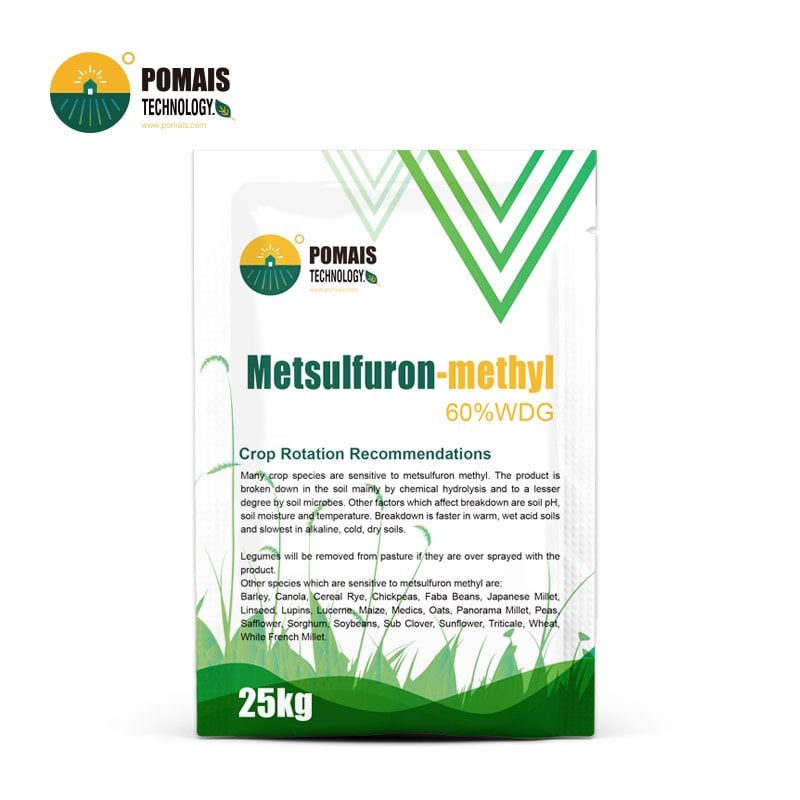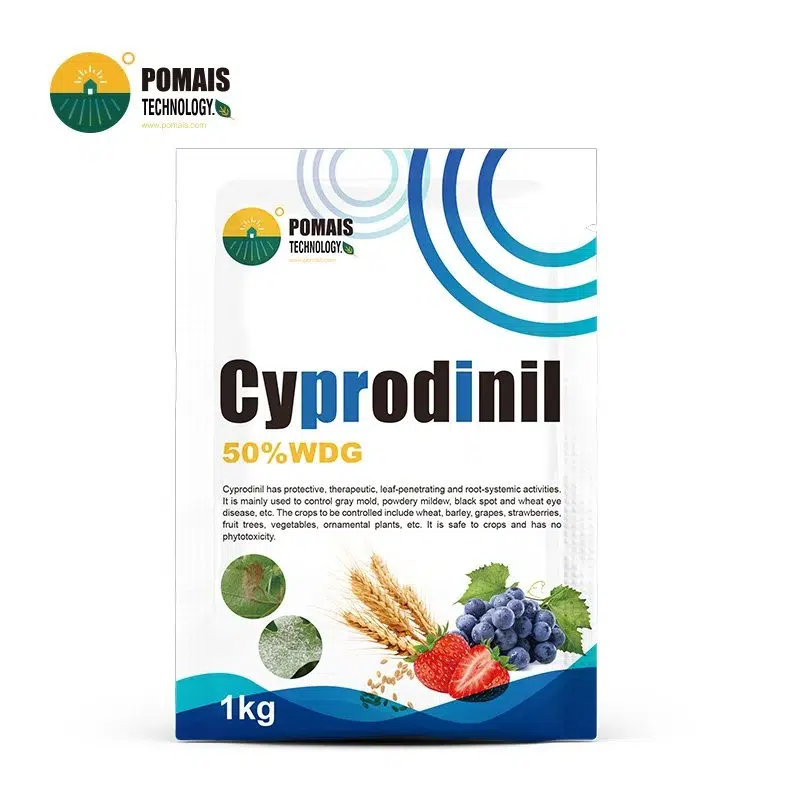Propoxur 1% + (Z)-9-Tricosene 0.05% Bait | Attract-and-Kill for Houseflies (IRAC 1A)
You deploy a ready-to-use bait that combines propoxur 1% (IRAC 1A, acetylcholinesterase inhibitor) with (Z)-9-tricosene 0.05% as a behavioral attractant to drive approach, landing, and feeding—then deliver rapid knockdown, where registered. This attract-and-kill profile is designed for bait stations and targeted perimeter placements around livestock facilities, transfer points, and outdoor service areas. Each lot ships with COA / SDS / TDS; OEM private label with multilingual artwork is available. Always follow the product label and local regulations.
At a glance
- Actives & content: Propoxur 1% + (Z)-9-tricosene 0.05%.
- Mode of action: IRAC 1A neurotoxic inhibition; pheromone-like lure increases feed-through.
- Use cases: Houseflies / stable flies (label-dependent) via bait stations and spot placements.
- Program fit: Works with IPM (sanitation, exclusion, monitoring) and non-1A rotations; strictly label-guided.
- Docs & OEM: COA / SDS / TDS, multilingual labels, barcoding/QR, tamper-evident options.
- Designed for Professional Buyers & Bulk Orders
- This product is available for business purchase and large-scale distribution.
- We support custom packaging, labeling, and formulation to meet your market needs.
- Let’s build your brand together.

About Propoxur 1% + (Z)-9-Tricosene 0.05% Bait | Attract-and-Kill for Houseflies (IRAC 1A)
About Propoxur 1% + (Z)-9-Tricosene 0.05% Bait | Attract-and-Kill for Houseflies (IRAC 1A)
| Actives / Content | Propoxur 1% + (Z)-9-tricosene 0.05% |
| Formulation | Bait (Ready-to-Use, attract-and-kill) |
| IRAC / Behavioral | IRAC 1A (acetylcholinesterase inhibitor) + pheromone-like lure to increase land-and-feed behavior |
| Action Profile | Approach → landing → feeding → rapid knockdown on label-listed flies |
| Primary Targets | Houseflies / stable flies (label-dependent) |
| Use Areas | Livestock facilities, waste transfer points, outdoor service zones, food-handling perimeters (non-contact areas) — where registered |
| Deployment | Bait stations and spot placements; integrates with IPM (sanitation, exclusion, monitoring) and non-1A rotations |
| Documentation | COA / SDS / TDS per lot; full batch traceability |
| OEM Options | Private label, multilingual artwork, barcoding/QR, tamper-evident packaging |
| Packs / Lead Time | Retail and bulk formats; lead-time windows & MOQ confirmed at quotation; forecast-based production slots |
Mode of Action & Behavioral Synergy
How the bait works after a fly lands
You deploy a behavioral attract-and-kill system that first draws adult flies using (Z)-9-tricosene 0.05%, then converts landings into feed-through on the bait matrix. Once ingested or contacted, propoxur 1%—a carbamate in IRAC 1A—inhibits acetylcholinesterase (AChE), causing acetylcholine accumulation, neuromuscular hyperexcitation, paralysis, and rapid knockdown, where registered. Because the pathway is contact and ingestion, your field results depend on station placement, traffic density, and palatability of the matrix; disciplined site hygiene and route planning keep flies cycling through bait points rather than sensitive areas.
Why the combination performs in real facilities
- Landing probability ↑: (Z)-9-tricosene acts as a pheromone-like cue that aggregates houseflies and increases land-and-feed behavior at your bait points.
- Conversion to mortality ↑: the matrix encourages feed-through; IRAC 1A then provides fast knockdown, reducing nuisance and breeding pressure near livestock and waste lines.
- Footprint control: by concentrating action in bait stations, you limit broad-area spraying and can align with IPM measures (sanitation, exclusion, monitoring) for sustainable pressure reduction.
- Program flexibility: you can rotate away from 1A in subsequent windows (per label) to manage selection pressure while keeping attract-and-kill coverage in place.
Stewardship checkpoints you control
- Label-guided deployment only; use bait stations or protected spot placements away from food-contact surfaces and out of reach of children and animals.
- Integrate sanitation (remove residues, moisture sources) so bait outcompetes competing substrates; keep routes aligned with airflows and fly corridors.
- Maintain inspection cadence: replace spent or contaminated bait; log station IDs, dates, and counts to inform rotation to non-1A tools as needed.
- Never place on food, feed, or potable water; operate strictly where registered and observe local notification or signage rules.
Target Pests & Use Areas
Primary targets (label-dependent)
- Houseflies (Musca domestica) — nuisance reduction and breeding-site pressure control through attract-and-kill.
- Stable flies (Stomoxys calcitrans) — perimeter bait stations to intercept resting/feeding traffic.
- Other label-listed filth flies as permitted where registered.
Program note: your results scale with station density, palatability, and sanitation that removes competing food sources.
Facilities & placements (where registered)
- Livestock operations: dairy, poultry, swine, and feedlots—use protected bait stations at non-contact zones (doorways, loading bays, service corridors, fence lines).
- Waste & logistics: transfer points, collection bays, recycling yards; place along fly corridors and shaded, dry structures.
- Food-handling perimeters: external areas away from food/food-contact surfaces; integrate with exclusion (screens, air curtains).
- Outdoor service areas: canopies, docks, equipment sheds; keep stations out of reach of children and animals and off water.
Integration with IPM
- Pair with sanitation (organic residue removal, drainage) so bait outcompetes competing substrates.
- Use monitoring (counts at stations, sticky cards near routes) to time non-1A rotations and refresh cycles.
- Maintain records (station IDs, dates, counts) to prove control and refine placement over time.
Always deploy label-guided, where registered, in bait stations or protected spot placements; never place on food, feed, or potable water.
Application Principles (label-guided)
Prepare & place — make every landing count
- Work label-guided and where registered; select bait stations or protected spot placements in non-food-contact zones.
- Choose shaded, dry, low-disturbance locations along fly corridors (doors, docks, service lanes); keep stations out of reach of children and animals.
- Coordinate with sanitation so the bait outcompetes organic residues; remove competing food sources and standing moisture.
- Keep containers closed until use; wear appropriate PPE and prevent spill or drift onto food, feed, or potable water.
Operate & maintain — keep the matrix attractive
- Inspect on a fixed cadence; replace spent, soiled, or water-damaged bait to maintain palatability and land-and-feed behavior.
- Secure stations against rain and wash-downs; use mounts or covers that protect the bait yet allow easy fly access.
- Prevent cross-contamination with cleaners or insecticidal sprays at the same point; keep label-permitted separation between tools.
- Record station IDs, placement notes, dates, and observations to standardize service quality and support audits.
Verify & rotate — sustain pressure reduction
- Track counts per station and nuisance indicators to confirm rapid knockdown and trend lines across routes.
- When performance plateaus or season shifts, rotate to non-1A tools per label and adjust station density/locations based on traffic maps.
- Maintain signage/notification where required; handle container disposal according to local rules. Deploy only where registered and never on food/food-contact surfaces.
Formulation & Stability
Matrix engineering — built for land-and-feed conversion
You work with a ready-to-use bait matrix that balances palatability, adhesion, and moisture control so flies land and feed instead of bypassing stations. The system supports controlled release of (Z)-9-tricosene 0.05% to sustain attraction, while propoxur 1% is positioned for contact/ingestion delivery. The matrix resists wash-downs and surface dust, and its odor profile is tuned to remain attractive in shaded, dry, low-disturbance placements—where registered.
Quality controls you can audit
- Active content: HPLC assay for propoxur 1%; GC/validated method for (Z)-9-tricosene 0.05% loading and uniformity.
- Physical performance: palatability screening, matrix hardness/friability, moisture and water activity checks; surface integrity after handling.
- Stability program: accelerated and ambient holds to verify active retention, release behavior, and package integrity; appearance/odor acceptance criteria.
- Documentation: each lot ships with COA / SDS / TDS and full batch traceability to support audits and distributor onboarding.
Storage & handling discipline
- Keep bait in original, tightly closed packaging; store in a cool, dry, well-ventilated place away from direct sunlight and incompatible materials.
- Prevent water ingress before deployment; avoid strong cleaning chemicals near stored bait to protect odor and palatability.
- Use FIFO; inspect packs for damage before loading bait stations; wear appropriate PPE.
- Never store with food, feed, or potable water; dispose of empties and residues per label and local regulations.
Packaging & OEM presentation
- Foil-laminate pouches and station-ready trays improve shelf stability and field loading speed; options for tamper-evident closures.
- OEM private label with multilingual artwork, barcoding/QR, and placement icons supports clear routing and compliance where registered.
Tank Mix / Co-placement & Safety
Compatibility & co-placement
- No tank mix: this is a ready-to-use bait; do not dilute or tank-mix. Use only label-permitted co-placement strategies.
- Separation: keep bait physically separate from residual sprays, space treatments by time and location, and avoid wetting bait with cleaners or insecticides that reduce palatability.
- Stations first: deploy in bait stations or protected spot placements away from food/food-contact areas and out of reach of children and animals.
- IPM pairing: pair with sanitation/exclusion/monitoring and rotate to non-1A tools in subsequent windows where registered.
Safety & handling
- Wear appropriate PPE; prevent contamination of food, feed, potable water, and animal habitats.
- Follow local signage/notification rules; maintain buffer from water and sensitive areas.
- Replace spent/soiled bait; dispose of residues/empties per label and local regulation.
- Operate strictly label-guided and where registered.
Regulatory & Stewardship
Operate within the label
- Use only where registered; the label governs sites, targets, intervals, and any restrictions for IRAC 1A baits.
- Packaging carries GHS elements; programs align with applicable REACH/WHMIS language as required.
- Maintain traceable records (station IDs, dates, observations, lot/batch, outcomes) to support audits and continuous improvement.
Environmental behavior (principles)
- Bait is attract-and-kill for adult filth flies; keep off water and food-contact surfaces.
- Limit non-target access via stations/covers; coordinate with sanitation to reduce competing substrates.
- Follow local rules for waste and container disposal; never apply to food/feed.
OEM Services & Market Support
Speed to market
- Private-label OEM with multilingual artwork, barcoding/QR, tamper-evident formats, and station icons for route clarity.
- Documentation kit: COA / SDS / TDS, spec sheet, and label templates for distributor onboarding and registrations.
Supply & operations
- Forecast-based production slots, confirmed lead-time windows, and export-ready palletization.
- Field toolkit: deployment SOPs, bait-station placement guides, sanitation checklist, monitoring sheets, and an audit-ready service log.
Field Use Scenarios (label-dependent)
Dairy perimeter — high traffic at loading bays
You map fly corridors (shade, airflow) and mount bait stations along bay frames and fence lines away from food-contact. After sanitation, you place stations at shaded, dry points, avoid wash-downs, and log station IDs. Within service windows, (Z)-9-tricosene boosts land-and-feed, propoxur 1% delivers rapid knockdown, and counts trend down. You refresh soiled bait and plan a non-1A rotation next window per label.
Waste transfer point — peak nuisance near doors
You deploy covered stations along door rails and wind-sheltered structures; you maintain separation from cleaners/sprays and keep records of counts per station. Attraction concentrates flies at the bait, reducing interior ingress. When counts plateau, you rotate away from 1A and tighten sanitation to protect gains.
Food-handling perimeter — compliance first
You operate outside food-contact areas only, with stations mounted on exterior structural elements under shade. Routes avoid customer access; signage/notifications are posted as required. Monitoring cards near doors confirm reduced landings; spent bait is replaced on cadence, and all disposals follow label and local rules.
FAQ
Q1. Can I dilute or spray this bait?
No. It is a ready-to-use bait; do not dilute or spray. Use only as label-permitted in bait stations or protected spot placements.
Q2. Can I use it with other fly controls?
Yes, where registered. Keep physical separation from residual sprays/IGRs and avoid wetting bait. Rotate to non-1A tools per label to manage selection pressure.
Q3. Will cleaners or water affect performance?
Yes. Cleaners, water, and direct wash-downs reduce palatability and lure release. Place stations under covers/shade and away from wash paths.
Q4. Is it safe around animals?
Keep stations out of reach of children and animals and away from feed/water. Follow PPE and label precautions and dispose of residues properly.
Q5. How often should I replace the bait?
Replace spent, soiled, or water-damaged bait and follow your inspection cadence. Use monitoring counts to set refresh frequency; always label-guided.
Q6. What documentation is supplied?
Each lot ships with COA / SDS / TDS and batch traceability for audits.
Why Choose POMAIS
- Formulation engineering: matrix palatability/adhesion, controlled (Z)-9-tricosene release, and verified propoxur 1% content (HPLC/GC).
- Compliance leadership: standardized label-guided language, GHS/REACH/WHMIS alignment, and audit-ready records templates.
- OEM speed & resilience: rapid private-label activation, multilingual artwork, and season-aligned supply.
- Field partnership: actionable SOPs, route design, station density mapping, and rotation roadmaps (non-1A) supporting IPM.
Partner with POMAIS Today
Request your spec sheet, label templates, samples, and a confirmed MOQ/lead-time window. Share your site type, traffic patterns, and station preferences; we will align branding, logistics, and rotation planning to your program. Always follow the product label and local regulations.
| Actives / Content | Propoxur 1% + (Z)-9-tricosene 0.05% |
| Formulation | Bait (Ready-to-Use, attract-and-kill) |
| IRAC / Behavioral | IRAC 1A (acetylcholinesterase inhibitor) + pheromone-like lure to increase land-and-feed behavior |
| Action Profile | Approach → landing → feeding → rapid knockdown on label-listed flies |
| Primary Targets | Houseflies / stable flies (label-dependent) |
| Use Areas | Livestock facilities, waste transfer points, outdoor service zones, food-handling perimeters (non-contact areas) — where registered |
| Deployment | Bait stations and spot placements; integrates with IPM (sanitation, exclusion, monitoring) and non-1A rotations |
| Documentation | COA / SDS / TDS per lot; full batch traceability |
| OEM Options | Private label, multilingual artwork, barcoding/QR, tamper-evident packaging |
| Packs / Lead Time | Retail and bulk formats; lead-time windows & MOQ confirmed at quotation; forecast-based production slots |
Mode of Action & Behavioral Synergy
How the bait works after a fly lands
You deploy a behavioral attract-and-kill system that first draws adult flies using (Z)-9-tricosene 0.05%, then converts landings into feed-through on the bait matrix. Once ingested or contacted, propoxur 1%—a carbamate in IRAC 1A—inhibits acetylcholinesterase (AChE), causing acetylcholine accumulation, neuromuscular hyperexcitation, paralysis, and rapid knockdown, where registered. Because the pathway is contact and ingestion, your field results depend on station placement, traffic density, and palatability of the matrix; disciplined site hygiene and route planning keep flies cycling through bait points rather than sensitive areas.
Why the combination performs in real facilities
- Landing probability ↑: (Z)-9-tricosene acts as a pheromone-like cue that aggregates houseflies and increases land-and-feed behavior at your bait points.
- Conversion to mortality ↑: the matrix encourages feed-through; IRAC 1A then provides fast knockdown, reducing nuisance and breeding pressure near livestock and waste lines.
- Footprint control: by concentrating action in bait stations, you limit broad-area spraying and can align with IPM measures (sanitation, exclusion, monitoring) for sustainable pressure reduction.
- Program flexibility: you can rotate away from 1A in subsequent windows (per label) to manage selection pressure while keeping attract-and-kill coverage in place.
Stewardship checkpoints you control
- Label-guided deployment only; use bait stations or protected spot placements away from food-contact surfaces and out of reach of children and animals.
- Integrate sanitation (remove residues, moisture sources) so bait outcompetes competing substrates; keep routes aligned with airflows and fly corridors.
- Maintain inspection cadence: replace spent or contaminated bait; log station IDs, dates, and counts to inform rotation to non-1A tools as needed.
- Never place on food, feed, or potable water; operate strictly where registered and observe local notification or signage rules.
Target Pests & Use Areas
Primary targets (label-dependent)
- Houseflies (Musca domestica) — nuisance reduction and breeding-site pressure control through attract-and-kill.
- Stable flies (Stomoxys calcitrans) — perimeter bait stations to intercept resting/feeding traffic.
- Other label-listed filth flies as permitted where registered.
Program note: your results scale with station density, palatability, and sanitation that removes competing food sources.
Facilities & placements (where registered)
- Livestock operations: dairy, poultry, swine, and feedlots—use protected bait stations at non-contact zones (doorways, loading bays, service corridors, fence lines).
- Waste & logistics: transfer points, collection bays, recycling yards; place along fly corridors and shaded, dry structures.
- Food-handling perimeters: external areas away from food/food-contact surfaces; integrate with exclusion (screens, air curtains).
- Outdoor service areas: canopies, docks, equipment sheds; keep stations out of reach of children and animals and off water.
Integration with IPM
- Pair with sanitation (organic residue removal, drainage) so bait outcompetes competing substrates.
- Use monitoring (counts at stations, sticky cards near routes) to time non-1A rotations and refresh cycles.
- Maintain records (station IDs, dates, counts) to prove control and refine placement over time.
Always deploy label-guided, where registered, in bait stations or protected spot placements; never place on food, feed, or potable water.
Application Principles (label-guided)
Prepare & place — make every landing count
- Work label-guided and where registered; select bait stations or protected spot placements in non-food-contact zones.
- Choose shaded, dry, low-disturbance locations along fly corridors (doors, docks, service lanes); keep stations out of reach of children and animals.
- Coordinate with sanitation so the bait outcompetes organic residues; remove competing food sources and standing moisture.
- Keep containers closed until use; wear appropriate PPE and prevent spill or drift onto food, feed, or potable water.
Operate & maintain — keep the matrix attractive
- Inspect on a fixed cadence; replace spent, soiled, or water-damaged bait to maintain palatability and land-and-feed behavior.
- Secure stations against rain and wash-downs; use mounts or covers that protect the bait yet allow easy fly access.
- Prevent cross-contamination with cleaners or insecticidal sprays at the same point; keep label-permitted separation between tools.
- Record station IDs, placement notes, dates, and observations to standardize service quality and support audits.
Verify & rotate — sustain pressure reduction
- Track counts per station and nuisance indicators to confirm rapid knockdown and trend lines across routes.
- When performance plateaus or season shifts, rotate to non-1A tools per label and adjust station density/locations based on traffic maps.
- Maintain signage/notification where required; handle container disposal according to local rules. Deploy only where registered and never on food/food-contact surfaces.
Formulation & Stability
Matrix engineering — built for land-and-feed conversion
You work with a ready-to-use bait matrix that balances palatability, adhesion, and moisture control so flies land and feed instead of bypassing stations. The system supports controlled release of (Z)-9-tricosene 0.05% to sustain attraction, while propoxur 1% is positioned for contact/ingestion delivery. The matrix resists wash-downs and surface dust, and its odor profile is tuned to remain attractive in shaded, dry, low-disturbance placements—where registered.
Quality controls you can audit
- Active content: HPLC assay for propoxur 1%; GC/validated method for (Z)-9-tricosene 0.05% loading and uniformity.
- Physical performance: palatability screening, matrix hardness/friability, moisture and water activity checks; surface integrity after handling.
- Stability program: accelerated and ambient holds to verify active retention, release behavior, and package integrity; appearance/odor acceptance criteria.
- Documentation: each lot ships with COA / SDS / TDS and full batch traceability to support audits and distributor onboarding.
Storage & handling discipline
- Keep bait in original, tightly closed packaging; store in a cool, dry, well-ventilated place away from direct sunlight and incompatible materials.
- Prevent water ingress before deployment; avoid strong cleaning chemicals near stored bait to protect odor and palatability.
- Use FIFO; inspect packs for damage before loading bait stations; wear appropriate PPE.
- Never store with food, feed, or potable water; dispose of empties and residues per label and local regulations.
Packaging & OEM presentation
- Foil-laminate pouches and station-ready trays improve shelf stability and field loading speed; options for tamper-evident closures.
- OEM private label with multilingual artwork, barcoding/QR, and placement icons supports clear routing and compliance where registered.
Tank Mix / Co-placement & Safety
Compatibility & co-placement
- No tank mix: this is a ready-to-use bait; do not dilute or tank-mix. Use only label-permitted co-placement strategies.
- Separation: keep bait physically separate from residual sprays, space treatments by time and location, and avoid wetting bait with cleaners or insecticides that reduce palatability.
- Stations first: deploy in bait stations or protected spot placements away from food/food-contact areas and out of reach of children and animals.
- IPM pairing: pair with sanitation/exclusion/monitoring and rotate to non-1A tools in subsequent windows where registered.
Safety & handling
- Wear appropriate PPE; prevent contamination of food, feed, potable water, and animal habitats.
- Follow local signage/notification rules; maintain buffer from water and sensitive areas.
- Replace spent/soiled bait; dispose of residues/empties per label and local regulation.
- Operate strictly label-guided and where registered.
Regulatory & Stewardship
Operate within the label
- Use only where registered; the label governs sites, targets, intervals, and any restrictions for IRAC 1A baits.
- Packaging carries GHS elements; programs align with applicable REACH/WHMIS language as required.
- Maintain traceable records (station IDs, dates, observations, lot/batch, outcomes) to support audits and continuous improvement.
Environmental behavior (principles)
- Bait is attract-and-kill for adult filth flies; keep off water and food-contact surfaces.
- Limit non-target access via stations/covers; coordinate with sanitation to reduce competing substrates.
- Follow local rules for waste and container disposal; never apply to food/feed.
OEM Services & Market Support
Speed to market
- Private-label OEM with multilingual artwork, barcoding/QR, tamper-evident formats, and station icons for route clarity.
- Documentation kit: COA / SDS / TDS, spec sheet, and label templates for distributor onboarding and registrations.
Supply & operations
- Forecast-based production slots, confirmed lead-time windows, and export-ready palletization.
- Field toolkit: deployment SOPs, bait-station placement guides, sanitation checklist, monitoring sheets, and an audit-ready service log.
Field Use Scenarios (label-dependent)
Dairy perimeter — high traffic at loading bays
You map fly corridors (shade, airflow) and mount bait stations along bay frames and fence lines away from food-contact. After sanitation, you place stations at shaded, dry points, avoid wash-downs, and log station IDs. Within service windows, (Z)-9-tricosene boosts land-and-feed, propoxur 1% delivers rapid knockdown, and counts trend down. You refresh soiled bait and plan a non-1A rotation next window per label.
Waste transfer point — peak nuisance near doors
You deploy covered stations along door rails and wind-sheltered structures; you maintain separation from cleaners/sprays and keep records of counts per station. Attraction concentrates flies at the bait, reducing interior ingress. When counts plateau, you rotate away from 1A and tighten sanitation to protect gains.
Food-handling perimeter — compliance first
You operate outside food-contact areas only, with stations mounted on exterior structural elements under shade. Routes avoid customer access; signage/notifications are posted as required. Monitoring cards near doors confirm reduced landings; spent bait is replaced on cadence, and all disposals follow label and local rules.
FAQ
Q1. Can I dilute or spray this bait?
No. It is a ready-to-use bait; do not dilute or spray. Use only as label-permitted in bait stations or protected spot placements.
Q2. Can I use it with other fly controls?
Yes, where registered. Keep physical separation from residual sprays/IGRs and avoid wetting bait. Rotate to non-1A tools per label to manage selection pressure.
Q3. Will cleaners or water affect performance?
Yes. Cleaners, water, and direct wash-downs reduce palatability and lure release. Place stations under covers/shade and away from wash paths.
Q4. Is it safe around animals?
Keep stations out of reach of children and animals and away from feed/water. Follow PPE and label precautions and dispose of residues properly.
Q5. How often should I replace the bait?
Replace spent, soiled, or water-damaged bait and follow your inspection cadence. Use monitoring counts to set refresh frequency; always label-guided.
Q6. What documentation is supplied?
Each lot ships with COA / SDS / TDS and batch traceability for audits.
Why Choose POMAIS
- Formulation engineering: matrix palatability/adhesion, controlled (Z)-9-tricosene release, and verified propoxur 1% content (HPLC/GC).
- Compliance leadership: standardized label-guided language, GHS/REACH/WHMIS alignment, and audit-ready records templates.
- OEM speed & resilience: rapid private-label activation, multilingual artwork, and season-aligned supply.
- Field partnership: actionable SOPs, route design, station density mapping, and rotation roadmaps (non-1A) supporting IPM.
Partner with POMAIS Today
Request your spec sheet, label templates, samples, and a confirmed MOQ/lead-time window. Share your site type, traffic patterns, and station preferences; we will align branding, logistics, and rotation planning to your program. Always follow the product label and local regulations.
Related Products
Latest News


